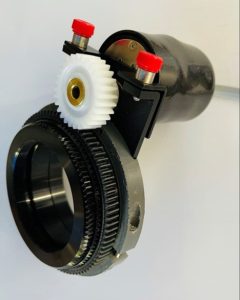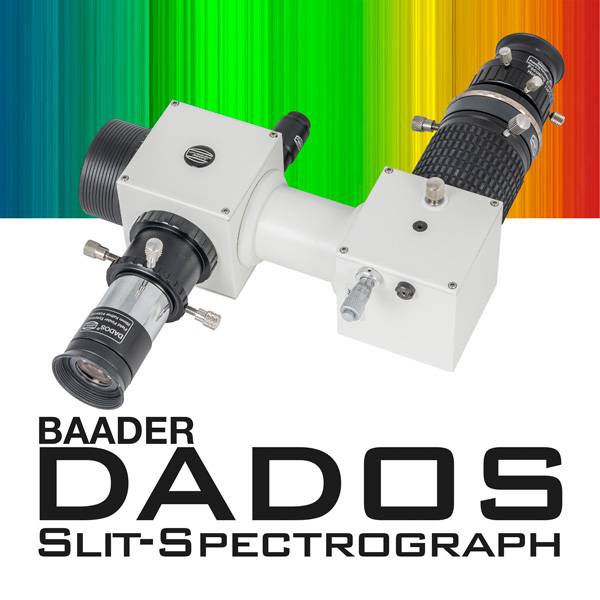Rigel Systems has announced updates to its usb-nFRAME camera rotator and framer with a complete redesign to offer a thinner and more rigid package. It utilizes a powerful stepper motor under the usb-nFRAME controller’s guidance, ensuring angular accuracy and repeatability to fractions of a degree. Its software is fully ASCOM compliant for rotation control from higher level autofocus software as well as manually from a PC.
 It features native M54 (male) threads on both telescope and camera sides. Adapters for M54 to M48, M42, and other threads are available upon request to fit various field flatteners, camera T adapters, T-thread spacers, off-axis guiders, filter wheels, and imagers.
It features native M54 (male) threads on both telescope and camera sides. Adapters for M54 to M48, M42, and other threads are available upon request to fit various field flatteners, camera T adapters, T-thread spacers, off-axis guiders, filter wheels, and imagers.
The usb-nFRAME functionality includes:
– Adds just 21mm to the length to an imaging stack
– Robust ASCOM drivers for Windows
– Angle positioning by PC from -10 to +370 degrees
– Go To Angle plus 5 user defined stored positions
– Rigid design avoids flexure as powerful stepper motor ensures angular accuracy and repeatability
– All necessary USB, stepper, and power cables included in the package.
The usb-nFRAME is easy to operate via ASCOM drivers or higher-level apps to automatically adjust a camera field with precision. Interfacing with the computer is extremely simple. Just plug in the USB, 12VDC and stepper cable, let Windows install the drivers, open up the usb-nFRAME ASCOM app to connect and start using the rotator.
You can learn more about the Rigel Systems usb-nFRAME here.

 And to make it easier for you to get the most extensive news, articles and reviews that are only available in the magazine pages of Astronomy Technology Today, we are offering a 1-year magazine subscription for only $6! Or, for an even better deal, we are offering 2 years for only $9. Click here to get these deals which only will be available for a very limited time. You can also check out a free sample issue here.
And to make it easier for you to get the most extensive news, articles and reviews that are only available in the magazine pages of Astronomy Technology Today, we are offering a 1-year magazine subscription for only $6! Or, for an even better deal, we are offering 2 years for only $9. Click here to get these deals which only will be available for a very limited time. You can also check out a free sample issue here.
The Sun is more active than it’s been in years and if that’s not enough, we have the upcoming Total Solar Eclipse on April 8, 2024! If you’d like to learn more about the technology behind solar observing, solar imaging and more, you can check out our new monthly magazine – Solar Astronomy Today. It’s free to read, no subscription needed and available here. And if you are preparing for the upcoming eclipses and want to know your equipment options from solar glasses to the most out of this world solar viewing and imaging options, check out our free publication – The Definitive Guide to Viewing and Imaging the Sun – simply click here and enjoy reading!



